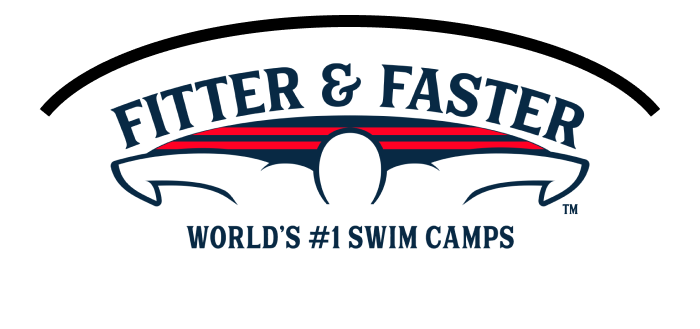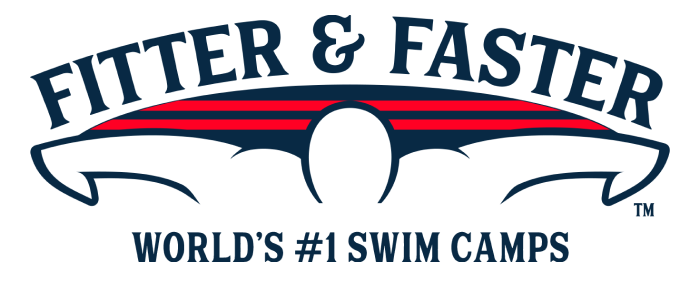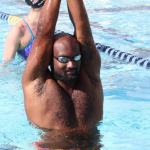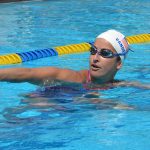Past Clinic: Butterfly and Freestyle Legendary Rivals Academy
Torrance Unified School District Aquatic Center
2320 Crenshaw Boulevard,
Torrance,
CA 90501
A description of what was covered at this past clinic is below the upcoming clinics.
Upcoming Swim Clinics and Camps
Within 250 miles of Torrance, CA.
Past Clinic
Introducción
Butterfly and Freestyle Legendary Rivals Academy (Torrance, CA) - This Technique Academy consists of five individual clinic sessions over five days to improve your swimmer's explosive power in key areas of racing fast - specifically in all butterfly and freestyle races. Sign up for individual sessions or ALL of them by clicking “Register Now.”
This Academy will feature five days of instruction, along with daily discussion topics. The start of the Academy will focus on the start of your race: starts and underwater dolphin kicking. Day two will focus on both flip turns and open turns. The third and fourth days will cover power and speed respectively for freestyle and butterfly. The Academy will close with relay exchanges, breakouts, and finishes.
This Academy will be led by Olympic legends Brett Hawke, Gary Hall Jr. and Michael Klim! Gary and Michael competed in three Olympic Games from 1996-2004, racking up 16 Olympic medals between the two of them. Olympic Athlete, Coach, and Fitter & Faster Elite Clinician Brett Hawke will also be a leading each session. Brett has been to 5 Olympic games: twice as a swimmer and three times as a coach. Your swimmer will have a once-in-a-lifetime opportunity to learn from these three legends of the sport!
Session Times (Each Day):
Ages 9-12: Check in 8:00 AM, Clinic 8:30 AM-11:00 AM
Ages 13 & Older: Check in 12:30 PM, Clinic 1:00 PM – 4:00 PM
Participantes sugeridos
SAVE! Sign up before prices rise or the sessions fill up!
The Academy consists of five clinic sessions for swimmers ages 13 & over and five sessions for swimmers ages 9-12 who have at least two years of competitive experience. Swimmers younger than 9 years old are not recommended for these clinics without their coach’s endorsement.
Plan de estudios
DAY 1 (MONDAY) : STARTS AND UNDERWATER DOLPHIN KICKING
Every butterfly and sprint freestyle race needs to begin with an explosive start and underwater dolphins kick. The start is your swimmer’s opportunity to cover as much ground as possible in a very short period of time, with great efficiency and momentum heading into the streamline and breakout. There are countless intricacies to performing a start, and it will only improve with practice. The clinicians for this Academy are some of the fastest sprinters in history and have spent countless hours practicing starts and underwater dolphin kicking. They will show your swimmer how to be explosive and efficient with each movement.
- STARTS: Your swimmer’s proper hand and foot placement on the block can allow them to drive forward with a lot of explosive power. The clinicians will work with your swimmer to find the best position on the block as well as how to launch their body forward efficiently into a tight streamline and enter the water through a small hole.
- UNDERWATER DOLPHIN KICKING: The fastest swimmers know how to weaponize their dolphin kicking. It is absolutely, undeniably, the fastest way to move through the water! When you dolphin kick on your stomach, side or back, understanding the importance of streamlined, underwater speed is vital for every swimmer!
- DISCUSSION - RIVALRIES: Gary Hall, Jr. and Michael Klim were part of one of the fiercest swimming rivalries between Australia and the United States Swimming Teams. This rivalry motivated each side and led to many broken world records and historic performances. Your swimmer will learn how to develop healthy rivalries and compete with sportsmanship.
DAY 2 (TUESDAY) : FLIP TURNS AND OPEN TURNS
Butterfly and freestyle races are often won and lost because of the quality of turns and finishes. Many people don’t realize this, but the push off and streamline should be the fastest a swimmer will go in the water. Even at the elite level, swimmers often add extra movements that slow them down and even cause them to lose close races. It’s easy to have lazy turns when you’re tired, but by learning the correct technique and practicing daily, your swimmer can gain speed on each turn.
- FLIP TURNS: Your swimmer will learn to carry their momentum through the turn to get in and out of every wall faster. Swimmers will practice accelerating into the wall, using their core and arms to get through the turn, and planting the feet on the wall for a powerful push off in the perfect streamline. Swimmers will learn drills and exercises to help them master this athletic skill!
- OPEN TURNS: Think about the open turn differently! Your swimmer should not be making an open turn to touch the wall and swim the next lap; if they’re doing this, they are actually stopping and then trying to regain speed. An expertly executed open turn involves spinning backwards, enabling your swimmer to carry momentum into the push off.
- DRYLAND FOR SWIMMING: Dryland training is designed to build strength, increase flexibility and to become a more well-rounded and agile athlete. Swimmers will learn age appropriate, simple body weight exercises that will strengthen their core and major muscle groups to complement the training done in the pool.
DAY 3 (WEDNESDAY) : POWER FOR FREESTYLE AND BUTTERFLY
Developing power is one way for your swimmer to continue to get better in the water. While dryland and strength training help swimmers get stronger, working on power exercises in the water helps to strengthen swimming specific movements. Developing power will help your swimmer be more efficient and stronger in the water!
- RESISTANCE TRAINING: One of the best ways to build power in freestyle and butterfly is to add resistance. Many swimmers use expensive equipment such as power rack to add resistance, but there are many inexpensive items like hand paddles and rubber tubing with a belt have the same effect. Even swimming with a T-shirt and shoes in the water can help add resistance and develop power!
- IMPROVING POWER IN STROKE TECHNIQUE: Swimmers are taught to decrease their resistance in the water for a faster stroke, but ADDING resistance causes swimmers to alter their technique and highlight any deficiencies. Removing that resistance then allows swimmers to feel those differences in technique and build power in their stroke technique.
- DYNAMIC WARM UP: Get ready for every practice and competition with a short dynamic warm up routine! A combination of light cardio exercises and dynamic stretches, this is an excellent way to get the blood flowing to the muscles and loosen joints to prepare for training and racing. Being properly warmed up will also help prevent injuries.
- DISCUSSION - MAINTAINING TECHNIQUE THROUGH FATIGUE: When your swimmer gets tired, it’s the easy choice to revert to sloppy technique in order to make the interval and finish the test. Choosing to focus on technique through fatigue is the difficult decision, but more beneficial in the long run. Your swimmer will learn from our clinicians how they handle fatigue in practice and races.
DAY 4 (THURSDAY) : SPEED FOR FREESTYLE AND BUTTERFLY
Swimmers can greatly change their race strategy by adjusting just two aspects of their stroke - distance per stroke and tempo. For example, it might be faster for one swimmer taking long slow strokes, while another swimmer may be better suited for more strokes at a higher rate. Learning to balance those two skills will help your swimmer be faster in any race!
- DISTANCE PER STROKE: One way to increase efficiency is to take fewer strokes. Counting the number of strokes and improving technique to decrease that number will save energy. On the other side, it may be faster to take more strokes per length, especially in shorter events.
- TEMPO: Your swimmer’s tempo is how fast or slow they complete each stroke. Having a slower tempo allows swimmers to conserve energy by taking fewer strokes, while a faster tempo is more tiring but much faster. Changing tempo based on event distance and fatigue level will help your swimmer swim as fast as possible.
- DISCUSSION - SPRINTING: Sprinting is all about swimming with “controlled aggression!” It is important to swim with power while also being relaxed - having too much tension will make your swimmer slip in the water and slow down. Hearing from these Olympic gold medal sprinters will provide participants with a unique perspective about this skill!
DAY 5 (FRIDAY) : RELAY EXCHANGE, BREAKOUTS, & FINISHES
The Academy will end with details focused on race preparation. Gary Hall Jr., Michael Klim, and Brett Hawke will share their experiences about how improving relay starts, breakouts, and finishes led to big returns at race time, especially in their specialty sprint events. Taking the time for meaningful practice of these skills will maximize your swimmer’s ability to drop time.
- RELAY EXCHANGES: Relays are often the most exciting races to watch and the most fun races to swim, and having great relay exchanges will take your team’s performance to the next level. Our clinicians will work with your swimmer on both sides of the relay start - swimming into the finish on a full stroke and timing the take off from the block for a fast start. Your swimmer will learn how to step forward on the block, swing their arms, and take advantage of that momentum into a powerful dive, streamline, and breakout.
- BREAKOUTS: After each perfect turn and off the start, the first strokes set the tone for the rest of the lap. A well-timed, powerful breakout will feel like your swimmer is exploding out of the water and provide important momentum moving forward.
- FINISHES: Races can be won or lost by hundredths of a second, and many races come down to the last few strokes. Your swimmer will learn how to use their kick to accelerate into the wall, time their stroke for a perfect arm extension, and keep their head down so they don’t waste any time or strokes as they approach the wall.
- DISCUSSION - RECOVERY: While training is important for swimming faster and gaining strength, recovery is just as important to make sure that you can keep training at a high level. While you can buy fancy products to help you recover, some of the most important things like getting enough sleep, staying hydrated, and stretching before and after practice are free!
ASK QUESTIONS
Each day, swimmers and parents are invited to ask the clinicians questions during a Q&A session. Gain insight into their training and coaching philosophies, diet and nutrition, and recovery tactics.
WATCH THE CLINICIANS
Observe Gary and Michael swim at full speed and demonstrate a progression of perfectly executed drills to achieve powerful, efficient, and fast swimming.
PUT YOUR SKILLS TO THE TEST
Swimmers will get to practice what they’ve learned by taking their stroke to top speed! They’ll work on holding onto their form while challenging themselves.
Take a photo with Olympians Gary Hall Jr., Michael Klim, and Brett Hawke, get autographs, and a gift from our sponsors!
Inquisitive, Educated Swimmers are Faster Swimmers! Sign up today!
Search all of our clinics...or request a clinic in your area


